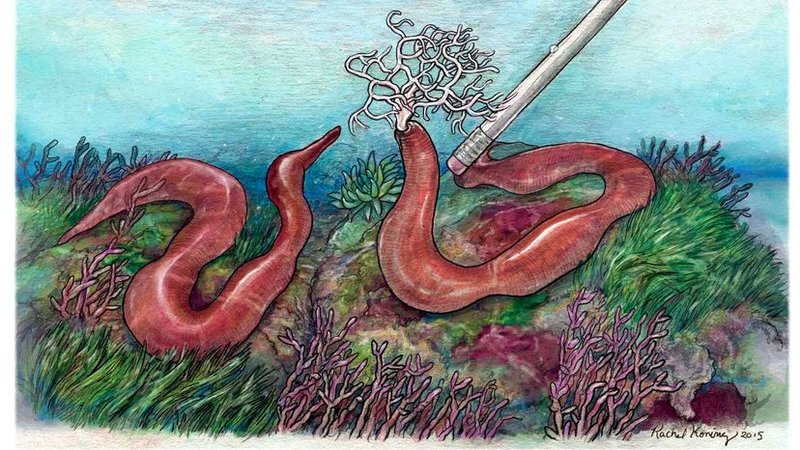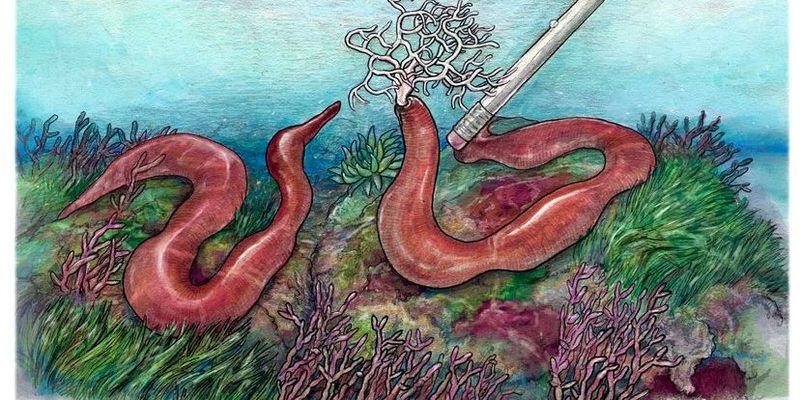
Picture this: the ocean is like a bustling city full of different neighborhoods. Each neighborhood is home to unique species, playing vital roles in maintaining the health and balance of their environment. Bootlace worms, scientifically known as *Lineus longissimus*, are like the unsung heroes of this underwater metropolis, quietly contributing to the ecosystem’s diversity. Let’s dive deeper into who these amazing creatures are and why they matter in marine biodiversity studies.
What Are Bootlace Worms?
Bootlace worms are a type of marine annelid, which means they are segmented worms. But the really impressive part? They can grow up to 30 meters long! That’s longer than a blue whale, which is usually the largest creature in the ocean. If you can imagine an elastic band that just keeps stretching, that’s kind of like what bootlace worms do. They’re often found in shallow waters around Europe, living in caves, under rocks, or buried in sand.
The body of a bootlace worm is long and slender, covered in a thin layer of mucus, which helps protect it and keep it moist. They can be various colors, often with striking patterns that resemble a tightly wound piece of string or lace—hence the name. This camouflage helps them blend into their surroundings, making it easier to evade predators. You might be wondering, do they bite? While they aren’t aggressive, they do have bristle-like structures that can irritate human skin, so it’s best to admire them from a distance.
The Role of Bootlace Worms in Ecosystems
Bootlace worms play an essential role in marine ecosystems. They are scavengers, feeding on organic material that decomposes in the ocean. This might include dead fish, plant matter, or other organic debris. By breaking down this material, they help recycle nutrients back into the ecosystem. You can think of them as nature’s recyclers, ensuring that nothing goes to waste.
Additionally, these worms provide food for various marine animals, such as fish and crabs. In this way, bootlace worms are a vital link in the food chain. If their populations decline, it could have a ripple effect, impacting not only the scavengers that rely on them but also the predators that feed on those scavengers. The balance of marine life is delicate, and every species contributes to a larger picture.
Marine Biodiversity Research and Bootlace Worms
Studying bootlace worms helps scientists understand marine biodiversity better. Researchers often use these creatures as indicators of environmental health. When a habitat is disrupted by pollution or climate change, the first species to struggle or disappear can be the smaller, less visible ones like bootlace worms. Monitoring their populations can give insights into the overall health of a marine ecosystem.
Marine biodiversity studies often involve collecting data on various species, including bootlace worms. By analyzing their distribution, behavior, and reproduction, researchers can identify patterns and changes in the environment. For example, if bootlace worms are thriving in an area where previously they were scarce, it might indicate improving conditions in that habitat.
Threats to Bootlace Worms and Marine Biodiversity
Unfortunately, bootlace worms face several threats, primarily due to human activity. Pollution is a significant concern, as chemicals and debris can disrupt their habitats. Overfishing also alters the balance of ecosystems, reducing the number of predators and competitors that keep bootlace worm populations in check. Climate change poses another significant threat, affecting water temperature and acidity, which can have a direct impact on their survival.
Conservation efforts are crucial to protect bootlace worms and, by extension, marine biodiversity. This can involve creating marine protected areas where human activity is limited, allowing ecosystems to recover and thrive. Additionally, promoting sustainable fishing practices helps maintain the delicate balance needed for all species to flourish, including those like bootlace worms that we might not hear about often.
Why Marine Biodiversity Matters
Understanding marine biodiversity, including bootlace worms, is vital for several reasons. First, it helps us appreciate the intricate webs of life in our oceans. Each species, no matter how small, plays a role in maintaining the overall health of marine environments. Protecting these ecosystems ensures that we preserve not just marine life but also the resources humans rely on, such as fish, clean water, and recreational opportunities.
Moreover, studying marine biodiversity can lead to discoveries that benefit humanity. Many medicines are derived from marine organisms, and the more we learn about these ecosystems, the more potential we have for future innovations. Investing in marine biodiversity studies can ultimately lead to a healthier planet for all of us.
Getting Involved in Marine Conservation
If you’re inspired by bootlace worms and the broader topic of marine biodiversity, getting involved is easier than you might think. Here are a few simple ways you can make a difference:
- Support Local Organizations: Look for local marine conservation groups that focus on protecting marine life and habitats.
- Participate in Cleanups: Join beach and underwater cleanups to help reduce pollution in marine environments.
- Educate Others: Share what you learn about marine biodiversity with friends and family to raise awareness.
- Choose Sustainable Seafood: When eating seafood, opt for sustainably sourced options to help protect aquatic ecosystems.
Every little action counts, and collectively, we can make a significant impact on preserving the oceans for future generations.
In summary, bootlace worms are not just fascinating creatures; they are vital players in the story of marine biodiversity. By understanding their role and the challenges they face, we can contribute to conservation efforts that protect not only these unique worms but the entire marine ecosystem. So, the next time you think about the ocean, remember the bootlace worms quietly working beneath the surface, helping to keep everything in balance.

